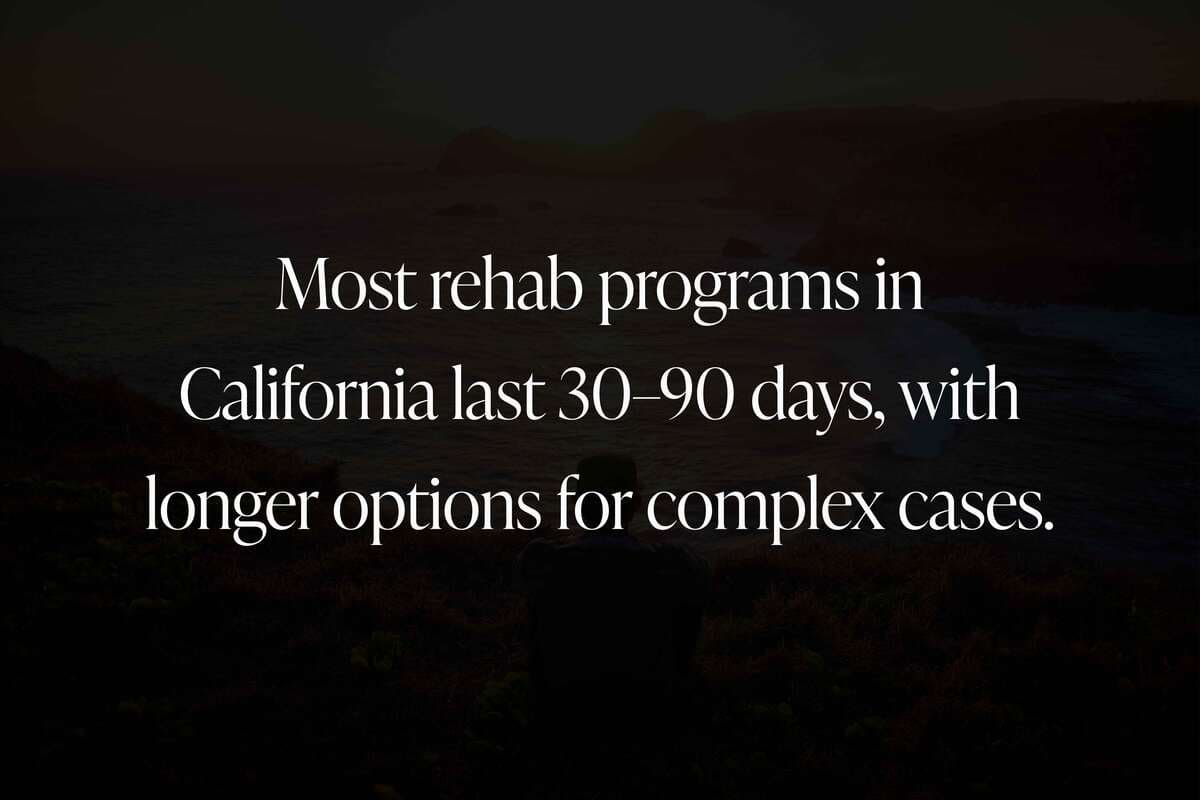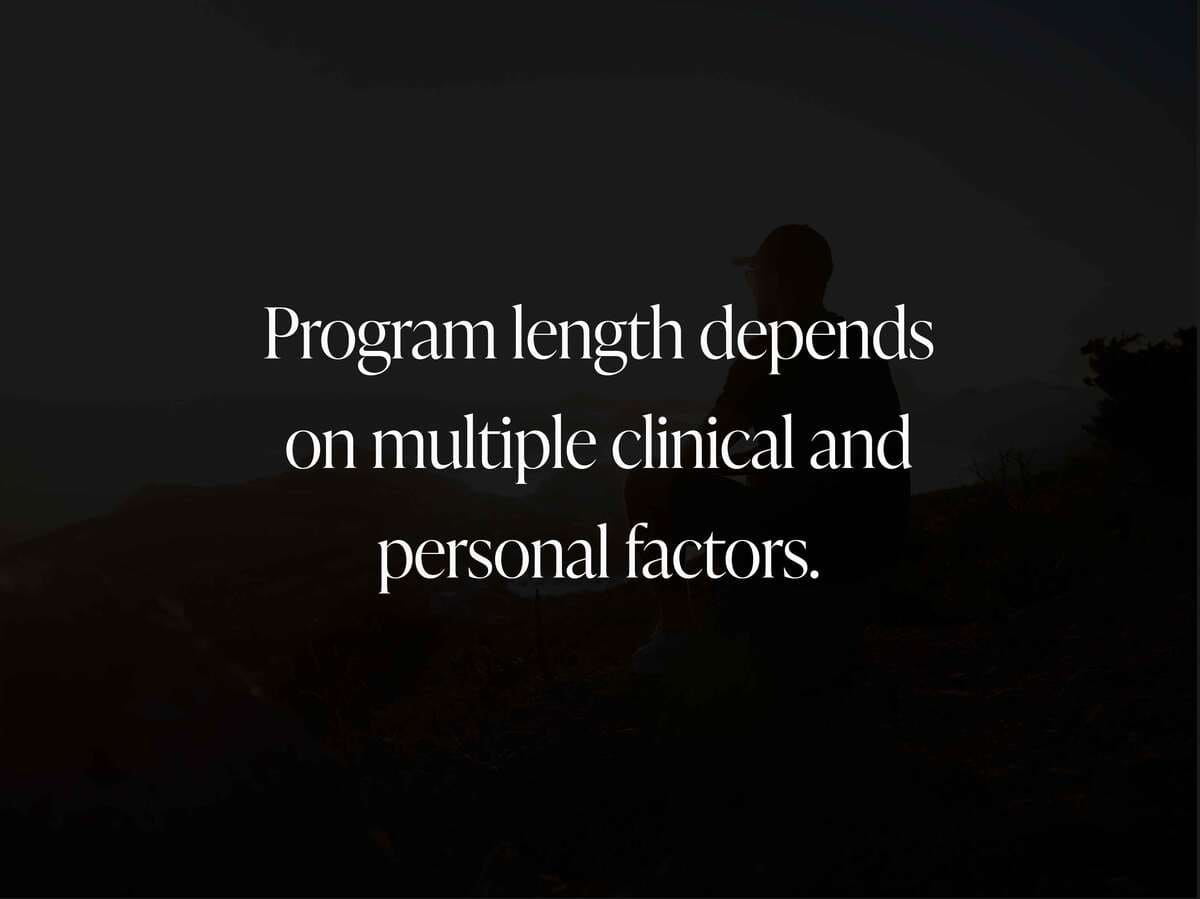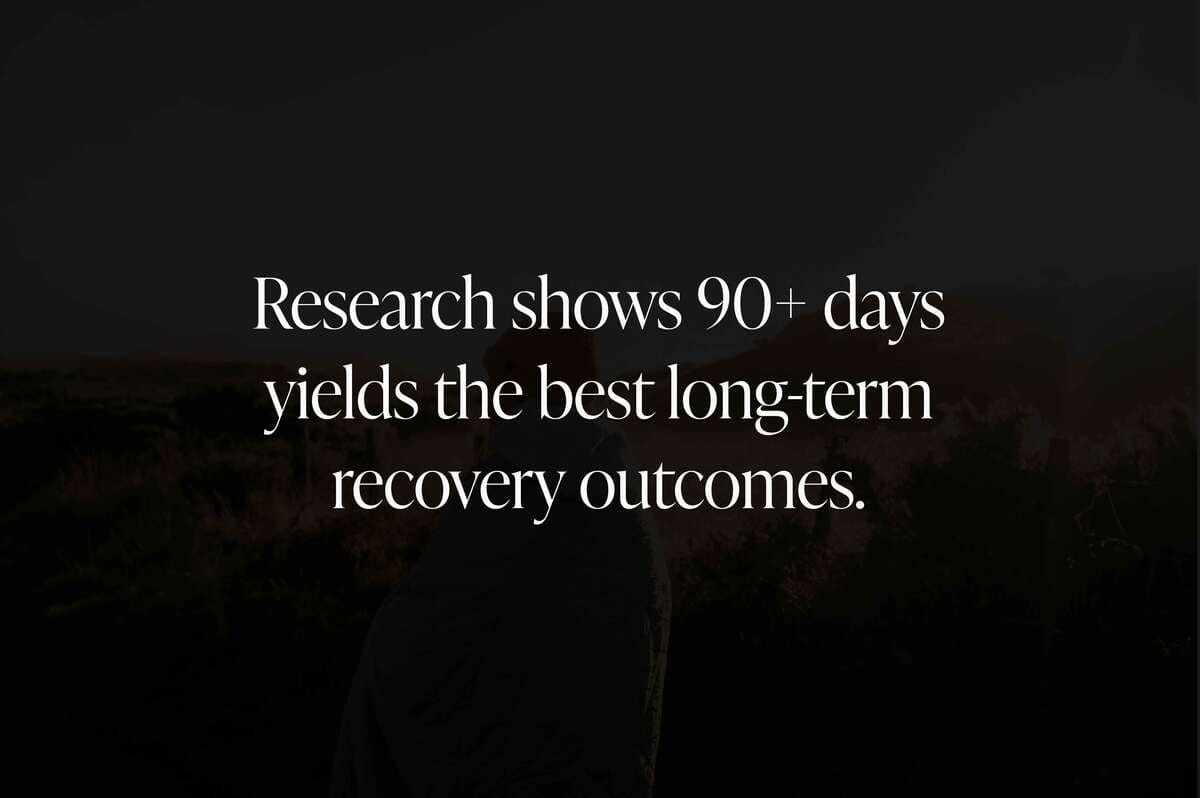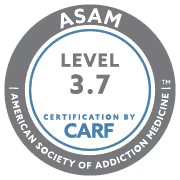Table of Contents
The average rehab program in California lasts 30 to 90 days, depending on the severity of addiction, mental health needs, and the type of treatment selected. Some individuals benefit from shorter intensive programs, while others require long-term residential care extending to six months or more.

Standard Rehab Timelines in California
Rehab centers across California typically offer treatment plans in the following durations:
Each facility may adjust program timelines based on clinical progress, insurance coverage, and patient commitment.
What Affects the Length of Rehab?
Several factors influence how long someone stays in rehab:
- Type of substance use disorder (SUD)
- Presence of co-occurring mental health conditions
- Level of care (inpatient vs. outpatient)
- Medical detox needs and relapse history
- Response to therapy and progress evaluations
Longer programs often allow for deeper behavioral changes and better coping skill development.

Inpatient vs. Outpatient Timelines
Inpatient Programs
- Require patients to live on-site
- Most last between 30 and 90 days
- Offer 24/7 medical supervision and structured schedules
- Best for individuals who need intensive care and separation from triggers
Outpatient Programs
- Patients live at home and attend scheduled sessions
- Duration ranges from 1 month to over a year
- Includes standard OP, IOP (Intensive Outpatient Program), and PHP (Partial Hospitalization)
- Ideal for those transitioning from inpatient rehab or needing flexibility
Why 90 Days Is Often the Gold Standard
Studies by the National Institute on Drug Abuse (NIDA) show that programs lasting 90 days or more yield the best long-term outcomes. Extended time in treatment gives patients more opportunities to:
- Understand root causes of addiction
- Establish healthy habits and routines
- Participate in aftercare planning
- Engage in ongoing therapy for relapse prevention
Many luxury centers in California offer 90-day minimums and recommend step-down services afterward.
If you're seeking a customized care plan with built-in flexibility and professional guidance, a rehab in California can help determine the ideal timeline for your situation.

Is Longer Always Better?
Not necessarily. While longer stays increase the likelihood of success, overly long programs can lead to treatment fatigue if not tailored correctly. Effective programs emphasize personalization, not duration.
Shorter rehab can work if:
- The addiction is newly developed
- The individual has high motivation to recover
- There’s a strong post-treatment support system in place
How Rehab Duration Relates to Broader Recovery Questions
Understanding how long rehab takes is part of building a successful long-term strategy. Here are related questions that often come up:
How Much Does Rehab Cost in California?
Costs scale with program length. A 30-day inpatient program may cost $10,000–$30,000, while a 90-day stay could exceed $60,000. Outpatient options are generally more affordable.
Can Couples Attend Rehab Together in California?
Yes. Couples can enter coordinated rehab programs together. Many facilities align treatment timelines for both partners while offering joint and individual therapy sessions.
What Is the Success Rate of Rehabs in California?
Rehab success is closely tied to program length. Facilities report higher completion and abstinence rates in patients who remain in treatment for 90 days or longer and follow through with aftercare.












